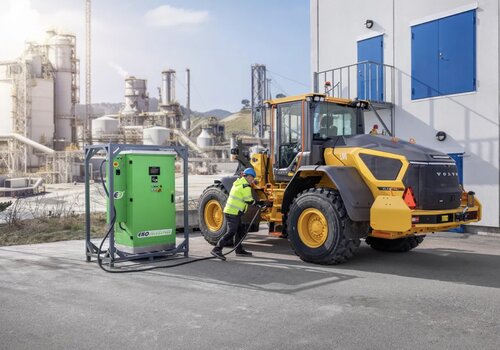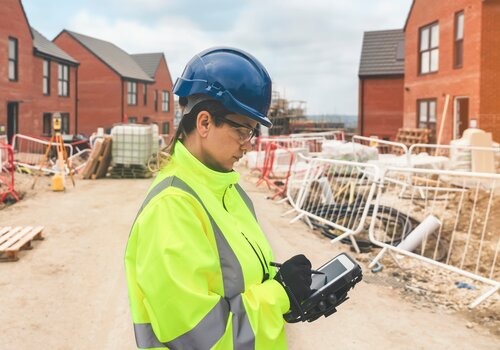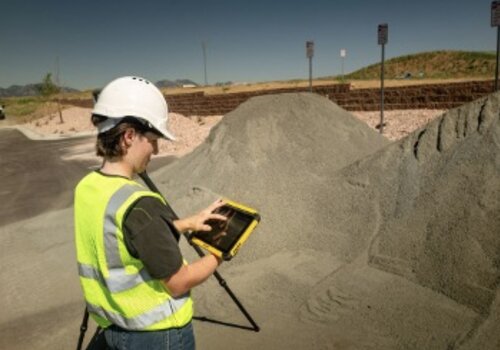Equipment telematics is essential for the construction industry in 2025, enabling construction companies to monitor and manage their machinery in real-time. With costs climbing and deadlines getting tighter, telematics helps us cut downtime with predictive maintenance and keeps things safer by monitoring how equipment is being used. Plus, it’s a huge win for fuel efficiency and tracking emissions, which is more important than ever. In a world where data is everything, telematics is how to stay ahead, save money and keep projects running smoothly.
UNDERSTANDING EQUIPMENT TELEMATICS
Equipment telematics involves the integration of telecommunications and informatics to collect and transmit data from construction machinery. This technology utilizes GPS, sensors and onboard diagnostics to gather information on equipment location, usage, performance and maintenance needs. The data is then transmitted to a centralized platform, providing fleet managers with actionable insights to optimize operations.
SIGNIFICANCE IN FLEET MANAGEMENT
The adoption of telematics in construction equipment has seen significant growth. According to Berg Insight, the global installed base of active construction equipment OEM telematics systems reached 6.8 million units in 2023 and is expected to grow at a compound annual growth rate (CAGR) of 12% to reach 12.1 million units by 2028.
This expansion is driven by several key benefits:
Enhanced Equipment Utilization: Telematics provides real-time data on equipment usage, enabling managers to identify underutilized machinery and redistribute resources effectively. This leads to improved productivity and a maximized return on investment.
Predictive Maintenance: By monitoring equipment health indicators, telematics systems can predict potential failures before they occur. This proactive approach reduces downtime and maintenance costs.
Safety and Compliance: Telematics tracks operator behavior and equipment conditions, ensuring adherence to safety protocols and regulatory compliance. This monitoring helps in mitigating risks and enhancing workplace safety.
Fuel Management: Monitoring fuel consumption patterns allows for the identification of inefficiencies, leading to optimized fuel usage and cost savings.
By monitoring equipment health indicators, telematics systems can predict potential failures before they occur. This proactive approach reduces downtime and maintenance costs.
REAL-WORLD EXAMPLES AND BENEFITS
- Eagle Power & Equipment’s Implementation of CASE SiteWatch™ and Kubota NOW: Eagle Power & Equipment, a construction equipment dealer, integrated telematics systems like CASE SiteWatch™ and Kubota NOW into their operations. These systems provided real-time data and advanced analytics, transforming how construction managers and equipment operators managed their fleets. The result was enhanced operational efficiency and reduced downtime.
- City of Houston’s Partnership with Samsara: In 2023, the city of Houston partnered with Samsara to implement telematics solutions across their vehicle fleet. This integration provided real-time tracking and data-driven decision-making capabilities, leading to improved fleet utilization and maintenance scheduling. The city reported increased operational efficiency and significant cost savings as a result.
- Terex Rough Terrain Cranes’ Introduction of Telematics-Enabled Cranes: In May 2023, Terex introduced the TRT 65, an off-road crane equipped with a telematics solution that provides real-time performance data. This innovation allowed operators to monitor equipment health and performance remotely, leading to improved maintenance practices and reduced downtime.
FUTURE TRENDS IN EQUIPMENT TELEMATICS
The construction equipment telematics market is poised for continued growth, with projections indicating a rise from $1.01 billion in 2024 to $1.87 billion by 2028, at a CAGR of 16.8%. This growth is expected to be driven by:
- Integration with Enterprise Resource Planning (ERP) Systems: Seamless integration with ERP systems will enable more efficient data management and decision-making processes.
- Advancements in IoT and AI Technologies: The adoption of Internet of Things (IoT) devices and Artificial Intelligence (AI) algorithms will enhance predictive maintenance capabilities and operational efficiency.
- Increased Automation: Automation in construction and heavy equipment operations will further optimize performance and reduce human error.
LOOKING AHEAD
Equipment telematics has become an indispensable tool in modern fleet management within the construction industry. By providing real-time insights into equipment utilization, maintenance needs and operational efficiency, telematics systems empower construction companies to make informed decisions that enhance productivity and reduce costs. As technology continues to advance, the integration of telematics with emerging technologies like IoT and AI will further revolutionize fleet management practices, driving the industry toward greater efficiency and innovation.
Photo credit: TUIPHOTOENGINEER/BIGSTOCKPHOTO.COM












